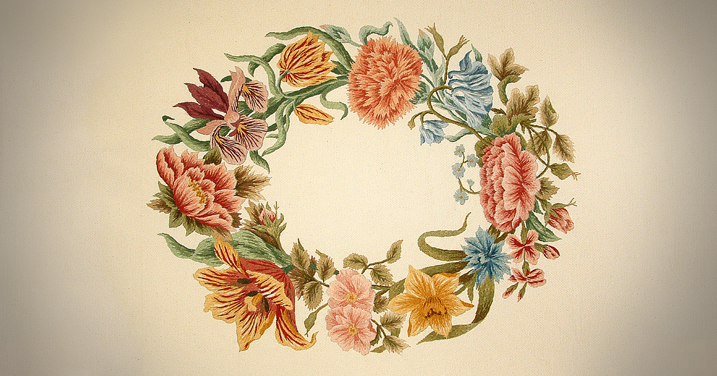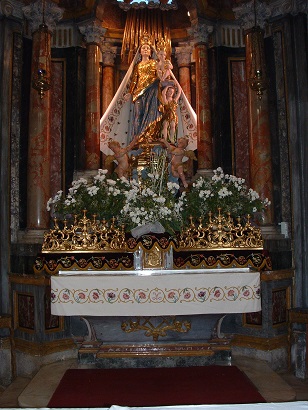
La più grande chiesa di Chieri, la Collegiata di Santa Maria della Scala o Duomo, conserva nella Cappella delle Grazie uno dei nostri lavori più belli e importanti: il manto che orna la statua della Beata Vergine delle Grazie.
È particolarmente significativo perché la Cappella delle Grazie ha una storia secolare e un valore religioso e civile ancora molto sentito in città.
Risale al XVII secolo, when the plague and the community raged,,it,no longer knowing how to curb the scourge,,it,he vowed to the Virgin to erect a chapel in his honor if he put an end to that terrible plague that had killed almost half of the people of Chieri,,it,Suddenly the plague stopped and the city kept the vow,,it, non sapendo più come porre argine al flagello, fece voto alla Vergine di erigere una cappella in suo onore se avesse posto fine a quella tremenda pestilenza che aveva ucciso quasi la metà dei chieresi. In modo improvviso la peste cessò e la città mantenne il voto.
The mantle
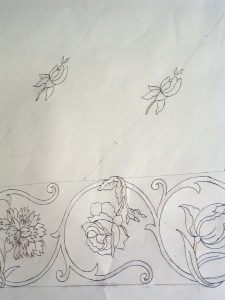
In 2005, on the occasion of the celebration for 600 years after the construction of the Cathedral and 100 Coronation of Our Lady of Grace, our association decided to offer to the statue a new coat embroidered Bandera which constituted an element of prestige to the city and a call to a great tradition which the Bandera.
As a first step they defined the details of the project: on color, there were no great discussions because, even though the two companies that produce the fabric Chieri provide it in different pastel colors in addition to the classic ecru,
It decided to remain in the tradition and use the fabric honeycomb ivory. For drawings by mutual agreement it was decided to embroider the edges of the cloak, those that are more visible, repeating the four traditional flower embroidery bandera: Pink, Peony, tulip and pink.
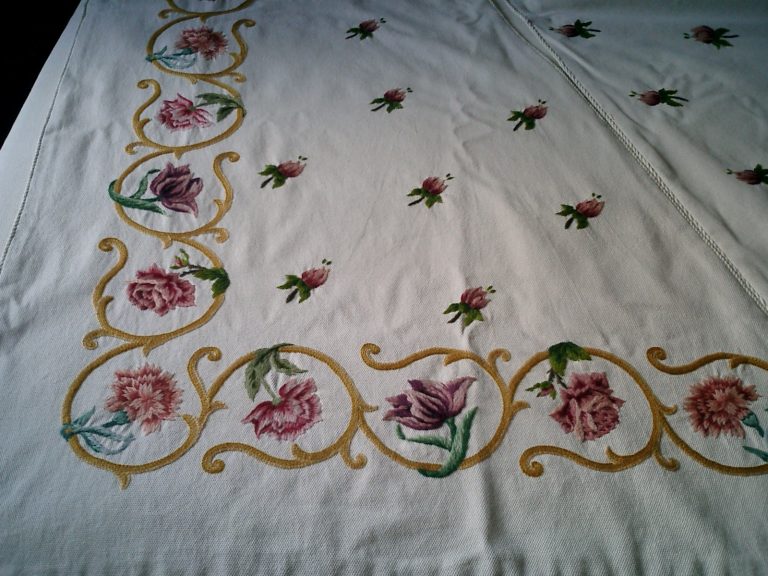
More complicated was the choice of the reason that blanket entire coat, because someone preferred the stars, that recall the sky, while others favored the rosebuds.
"In the end we decided for roses", recalls President Anna Ghigo, “In consideration of the fact that I am the flower of the Madonna, so the mantle was quilted with rosebuds ".
After defining the design, He began with the realization: the mantle was drawn on paper, then they stitchers performed of the samples to determine the colors and the amount of yarn needed.
"It was a tough job", Anna still remembers Ghigo.
“We calculated the time we had available and how much each flower required, then we distributed among the embroiderers. Considering that you could not work all at once, I saw that the curtains were two, we had to get organized to finish it in time for the celebration ".
Since then, the mantle adds a particular brightness of the statue, appreciated by many of the faithful and visitors who stop in front.
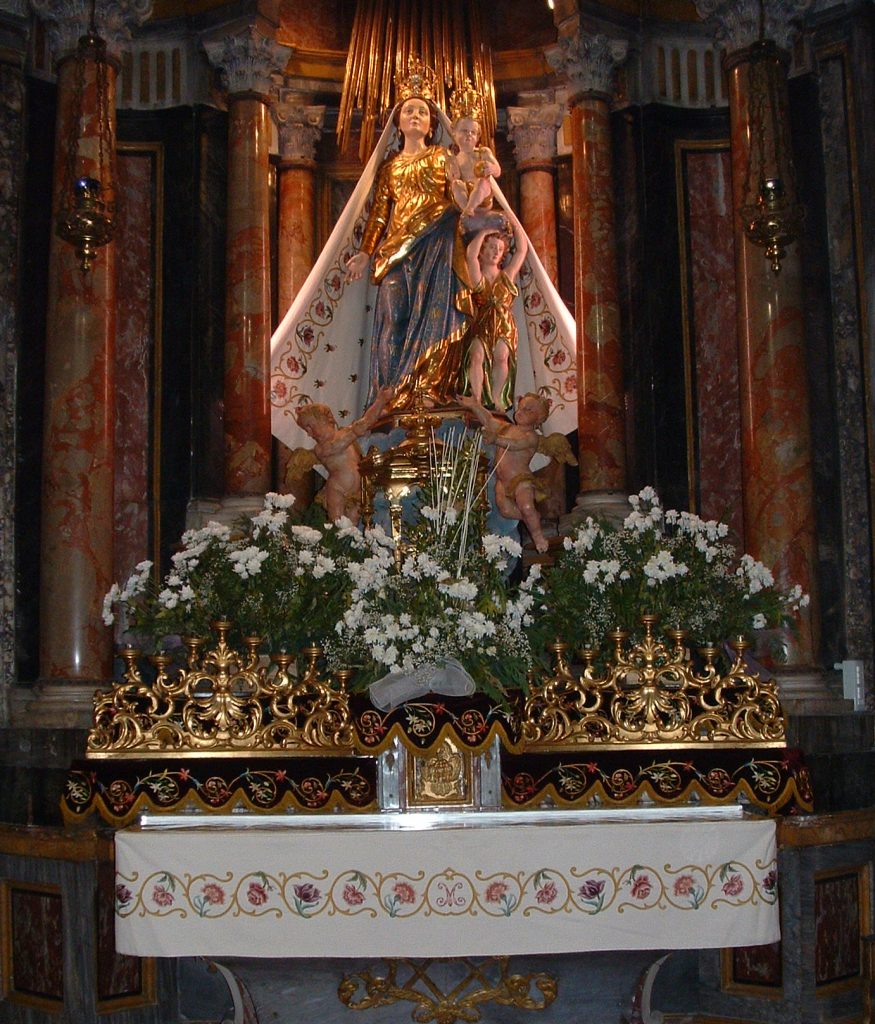
At Christmas of the same year embroiderers embroidered Association also donated coprialtare, on the lining which have embroidered their names: Anna Ghigo who also designed the pattern, Orsola Benente, Cristina Hat, Bruna Castles, Giuseppina Fazzone, Grace Maria Ferrante, Carmen Ferrero, Maria Teresa Grosso, Michelina Perello, Alda Savio and Alessandra Potty.
The chapel
In the seventeenth century the plague, one described in the unforgettable pages of "The Betrothed" by Alessandro Manzoni, He raged across northern Italy and did not spare the city of Chieri. In July 1630, when the size of the infection had become such as to cause the death of 4.000 from 11.000 inhabitants, Mayor Charles Robbins San Raffaele convened the City Council and the magistrates of Health to elect ten Conservative Health that would propose initiatives relevant for addressing the epidemic.
Realizing the ineffectiveness of the few medical remedies of the time, the first decision of the Conservatives was to turn to God and ask for the intervention of the Virgin Mary, in order to stop the contagion.
The 26 July 1630 Rating made public within the church to erect a chapel dedicated to Our Lady of Grace in community charges.
After the pronouncement of the vote, the plague epidemic stopped abruptly and inexplicably, and the City Council prepared to keep the vote: endowed underwent ten days chapel 28 of land boards for its maintenance. Inside the building, however, there was no one available space to build it and designated Board members made contact with a noble chierese, Aurelio Valimberti, for the sale of half of its chapel dedicated to San Giuliano, located in the left aisle, just beyond the entrance. Given the importance of the event, Noble agreed and the Directors appointed the brothers Rusca, impresarios Lugano, to transform the space into municipal votive chapel. A Pietro Botto of Savigliano was commissioned to carve the wooden statue of the Madonna and brothers Cerutti, grandchildren Francesco Fea, entrusted the decoration.
In February 1636 It was the inauguration of the chapel, which from then on was, and it is still, the center of the devotion of Chieri.
However, sizes were quite modest, and the mid-eighteenth century the abbot Giuseppe Antonio Buschetti, Provost of the Collegiate, He allowed it to be put forth in prolonging the provost's garden. He himself designed the current wrought iron gate, made by Antonio Carrera. The cathedral chapter, in agreement with the City, in 1757 He entrusted the task to implement the project to the famous architect Bernardo Vittone, considered one of the Piedmontese Baroque masters. Vittone in a letter said to have designed the niche of those on the model statue of the Virgin which are in the main nave of S. John Lateran in Rome, why not remain closed and barely visible to the devotees, and he brightened "the bernina", ie with hidden natural light sources. The statue was enriched with a child holding a pillow on which she sits Jesus.
The chapel was completely covered by polychrome marbles and on the sides were placed two paintings that describe as many phases of the plague that devastated in Chieri 1630. They are two works by Giuseppe Sariga, a painter born in the area of Lake Lugano but lived and active in Piedmont where he left many works.
The one on the left of the altar, say contagion, It describes the raging of the plague, in the foreground a crowd of sick and dying, and the background wagons carrying corpses. An angel flies over the city brandishing a flaming sword suggests the reading of the tragic event as a punishment from God (the same interpretation, the rest, that in their speeches they gave the City Council members). In the right context, say The solemn vow, the scene is completely different: the clergy, the authorities, brotherhoods and the people, gathered in the square, invoke the Madonna delle Grazie from the plague. The angel sheathing his sword symbolizes the fulfillment of the prayers and the end of the punishment.
A Giuseppe Sariga was also entrusted with the decoration of the dome: the artist will frescoed cherubs fluttering among the clouds against a blue sky.
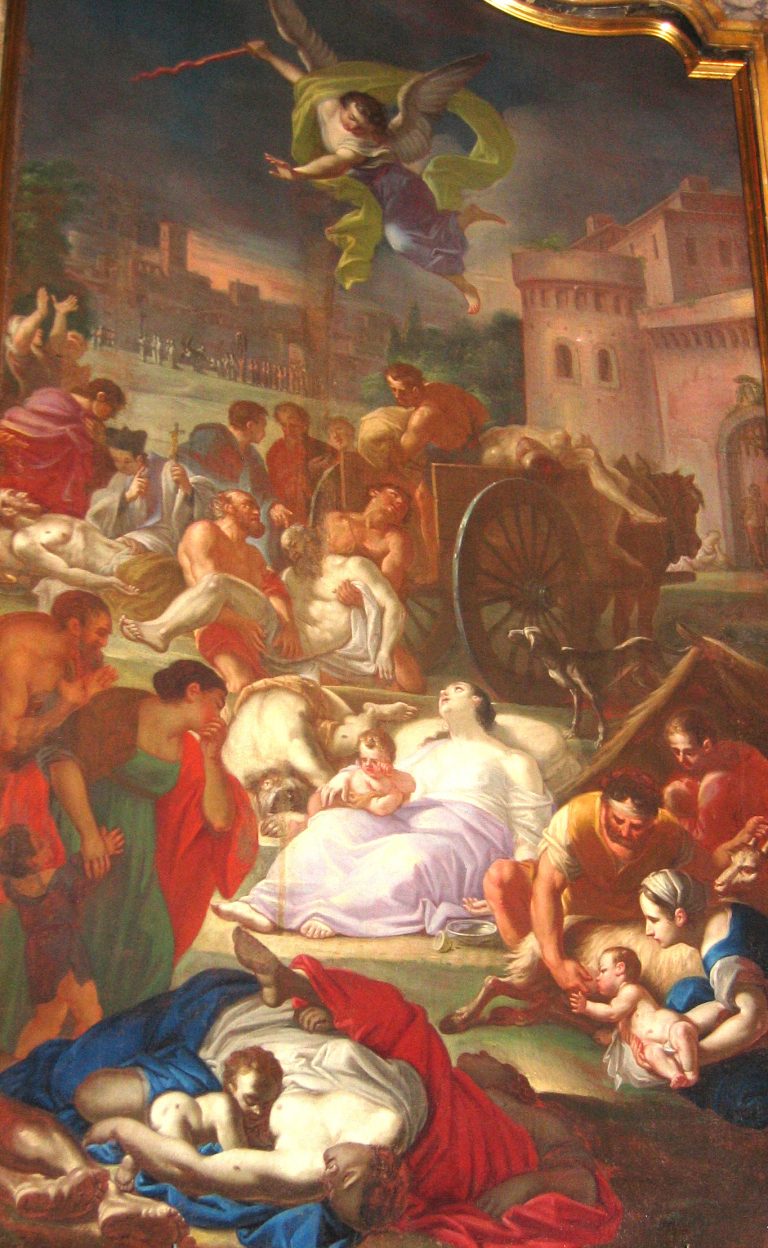
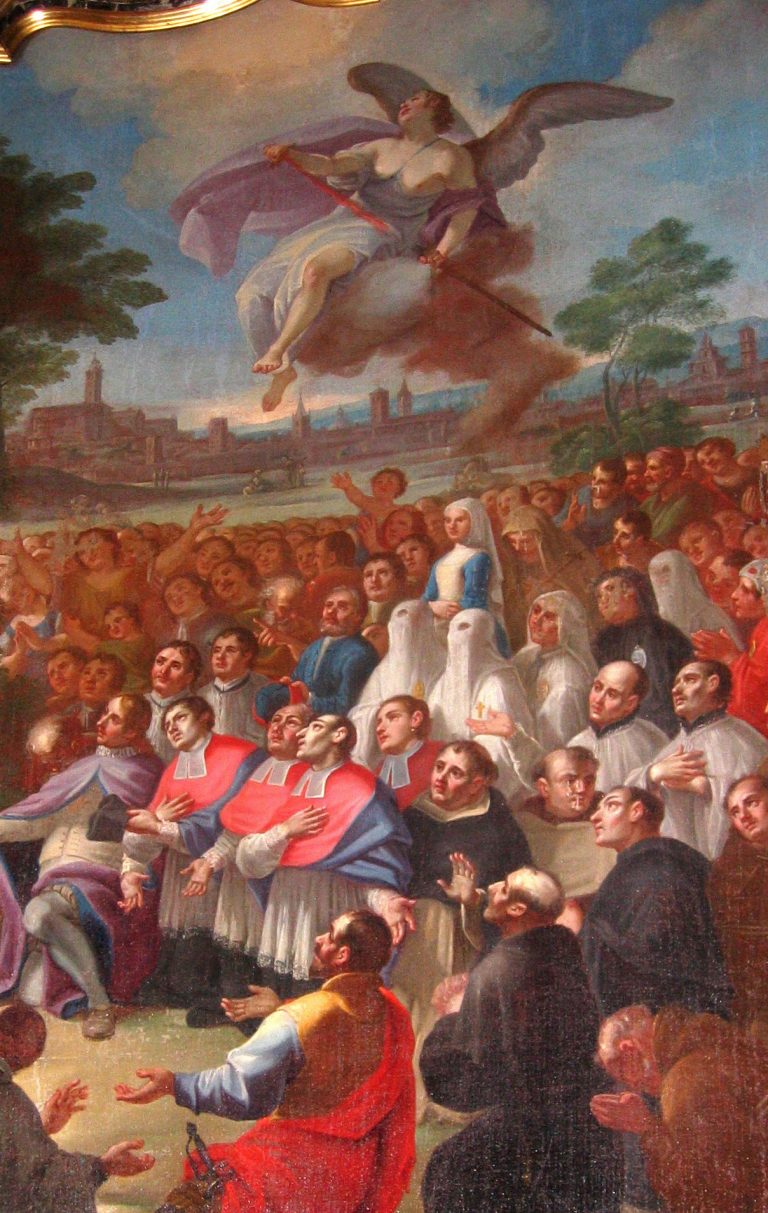
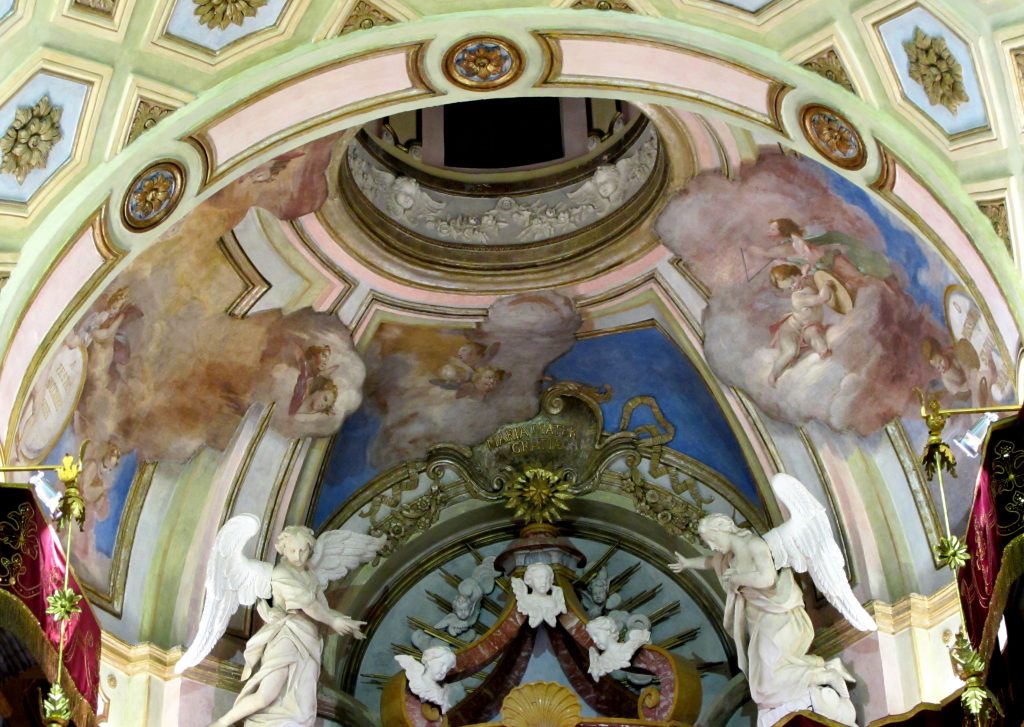
The vote
The vote of 1630 established to celebrate a solemn Mass every first day of September, a Mass every Saturday of each week, and the same evening to sing the Litany of the Virgin Mary in the chapel itself.
Today again, after almost four centuries, every year the vote is renewed and commemorated with the patronal feast of the City of Chieri dedicated to Our Lady of Grace.
The Sunday before the second Monday of September is celebrated the 18 the Votive function of "Hello" with the participation of bishops, municipal authorities, Representatives of the Forces of order and territorial associations and the next day, during a solemn Mass, the city authorities renew their act of devotion to Mary.
Don Bosco
In this chapel was particularly fond of St. John Bosco, who spent ten years in Chieri, fundamental for his life: came sixteen, still in search of its way, and in front of the Madonna delle Grazie he prayed every day, morning and evening. Just in the chapel, praying and reflecting, he decided his future. When he became a priest celebrated Mass there the fourth.




